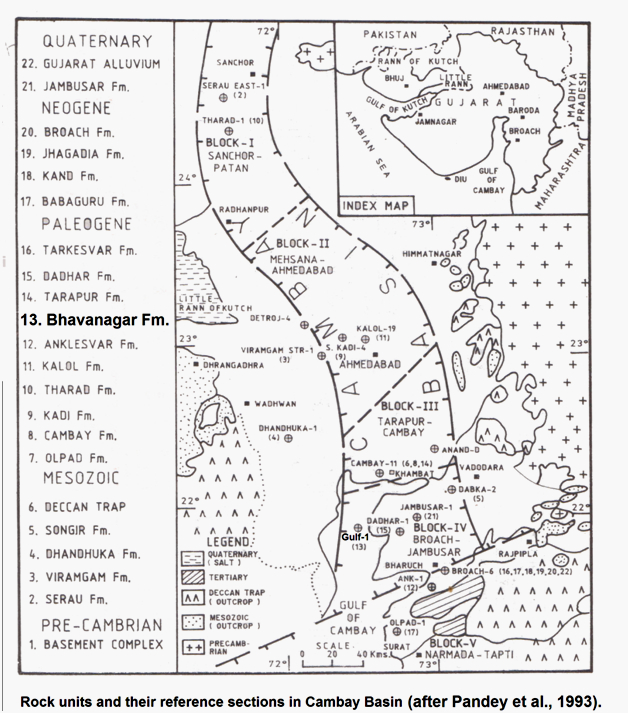Bhavanagar Fm
Type Locality and Naming
Localized occurrence. SUBSURFACE: Named after the township of Bhavanagar. Well Gulf-1, (depth interval 1891-2012 m), 121 m thickness. [Original Publication: Pandey, J., Singh, N.P., Krishna, B.R., Sharma, D.D., Paraish, A.K. and Nath, S.S. (1993) Lithostratigraphy of Indian Petroliferous Basins, Document III, Cambay Basin, 2 volumes, KDMIPE, ONGC Publicaiton, pp 1-166.]. Reference well: Well Gulf-2 (depth interval 1652 – 1780 m), 128 m thickness.
Synonyms: Pipavav Formation of Zutshi et al. (1993) is considered as junior synonym for this formation.
Lithology and Thickness
Sandy claystone. The type section includes grey shale, sandstone and ferruginous sandy claystone. The shales are intercalated with sideritic mudstone and sandy mudstone and sandstone. The sandstone is hard, coarse to very coarse grained. The thickness of the formation is 121 m in Gulf-1.
[Figure 1: Rock units and their reference sections in Cambay Basin (after Pandey et al., 1993)]
[Figure 2: Generalized stratigraphy of the Cambay Basin. (from Jaiswal and Bhattacharya, 2018, J.EarthSyst.Sci., 127:65)]
Relationships and Distribution
Lower contact
The formation is unconformable with the Olpad Fm.
Upper contact
Unconformable with the Tarapur Fm
GeoJSON
Fossils
The formation is poorly fossiliferous, includes: palynofossils Polybrevicolporites cephalus, Plygalacidlites clarus, Pellicieroiporites sp., and P. langenheimii.
Age
Depositional setting
Additional Information

